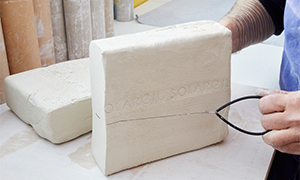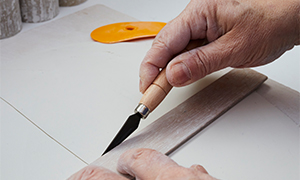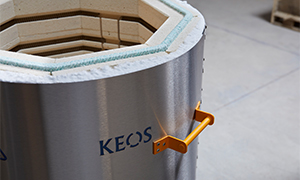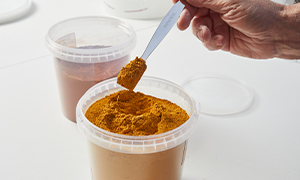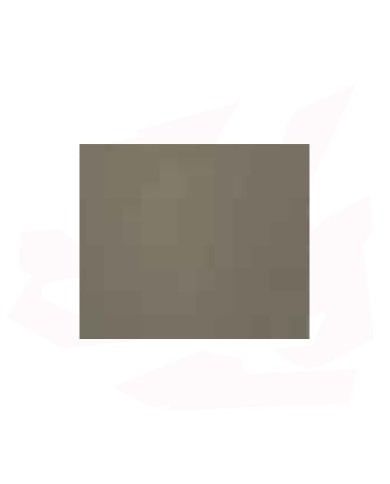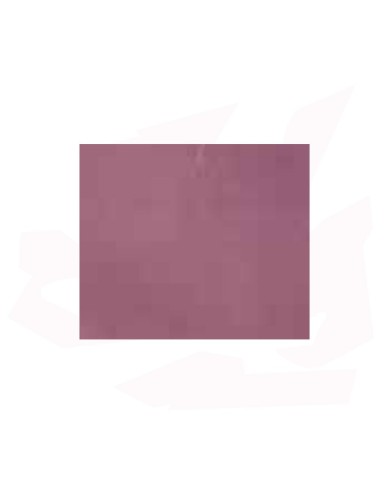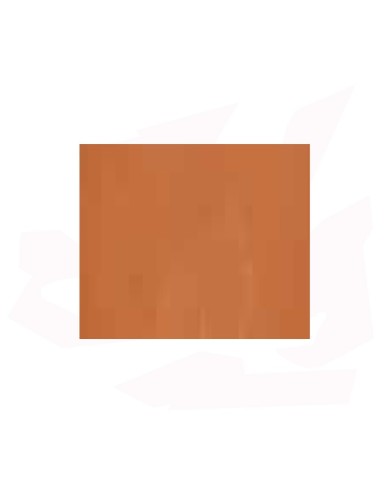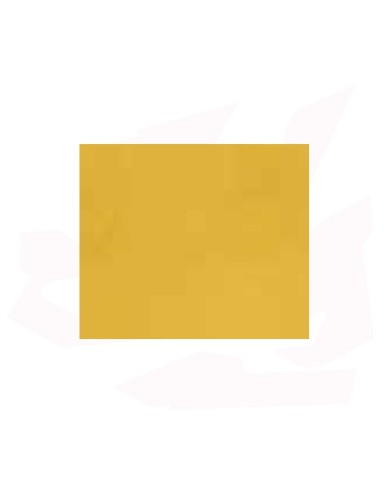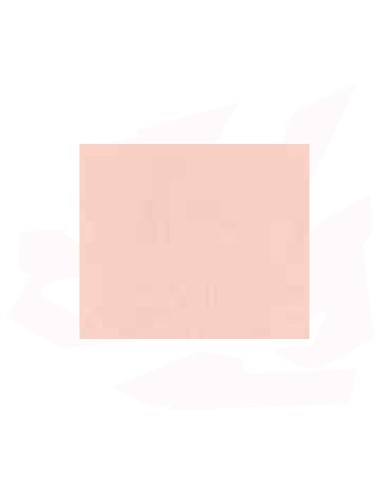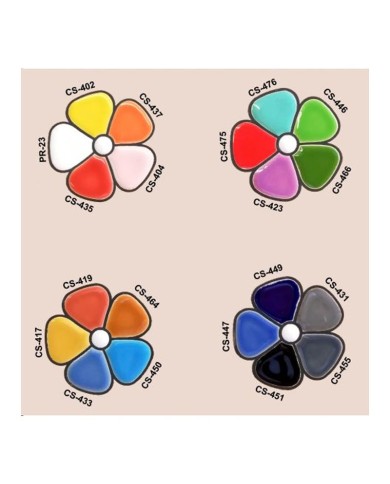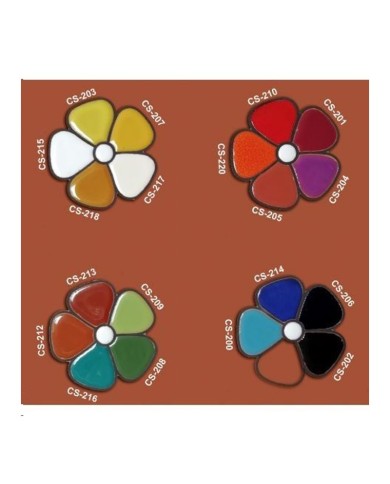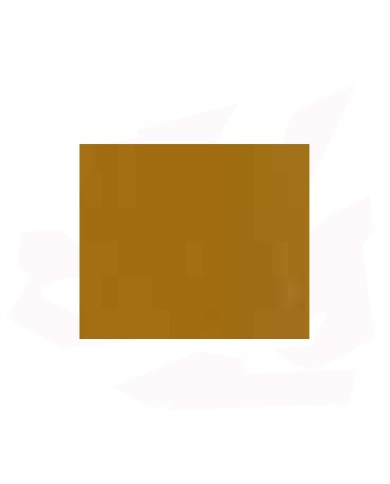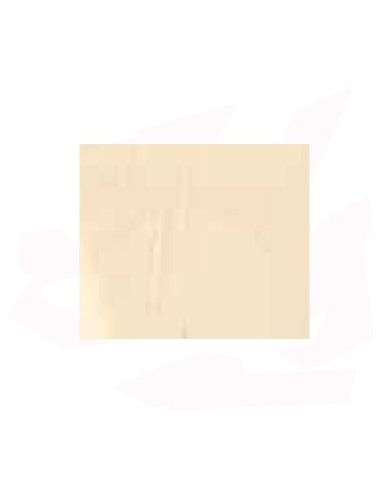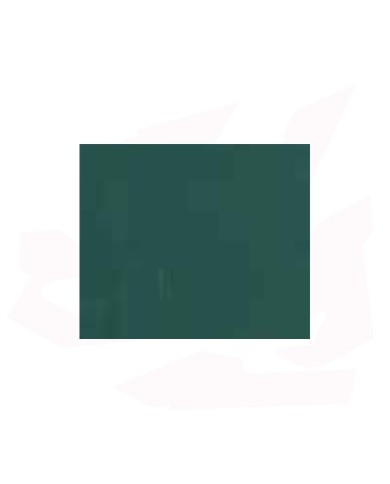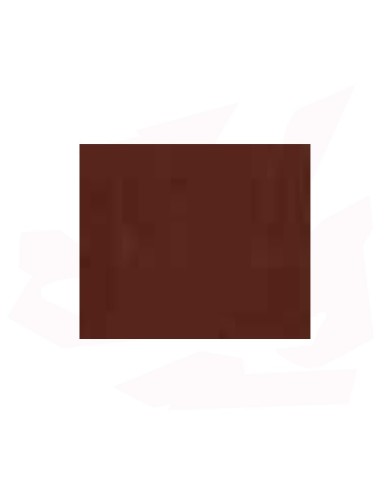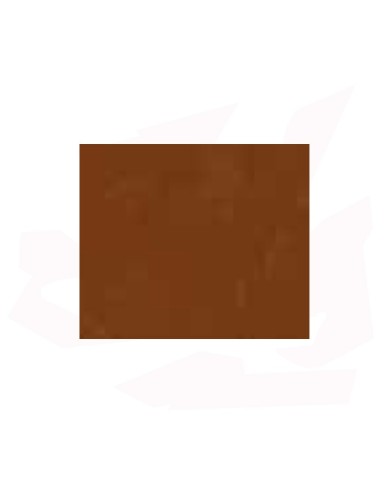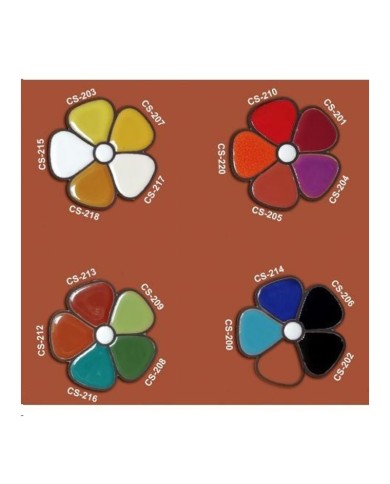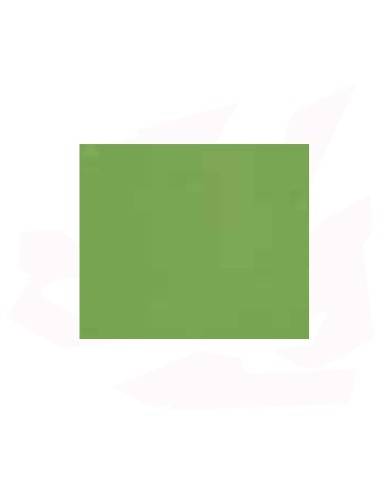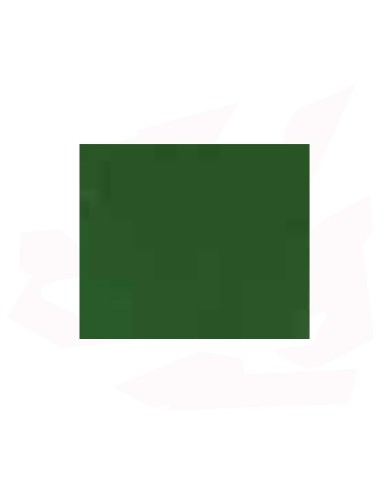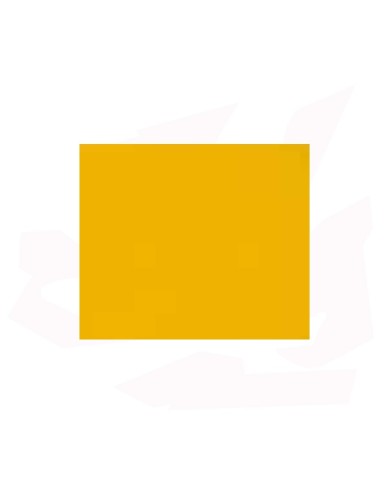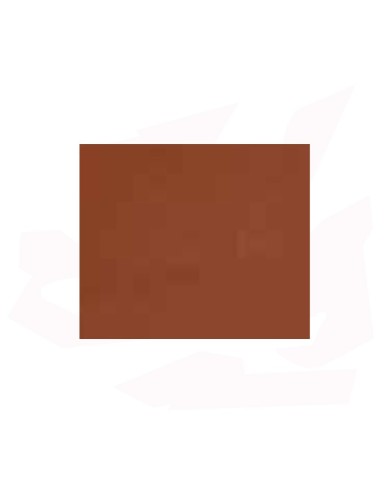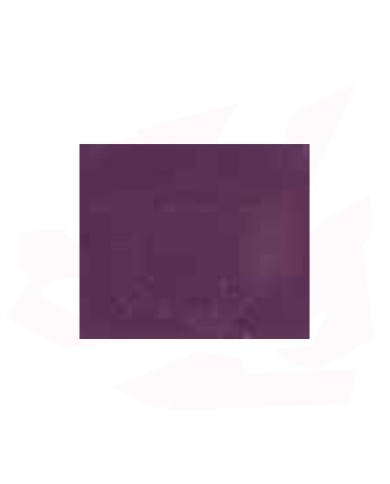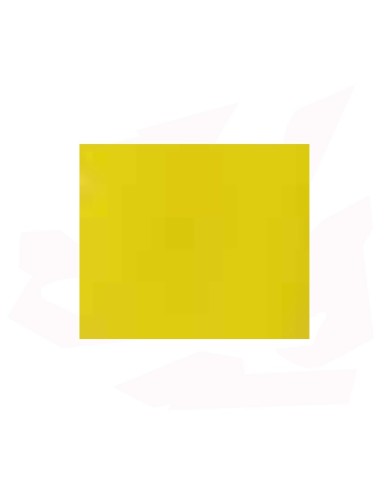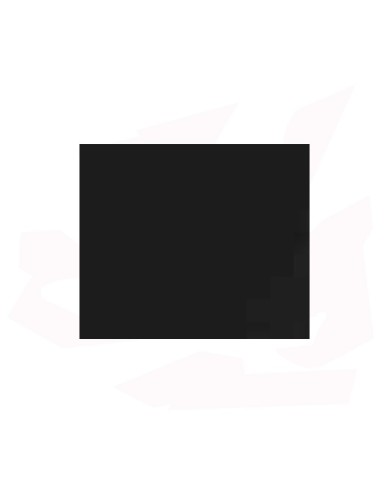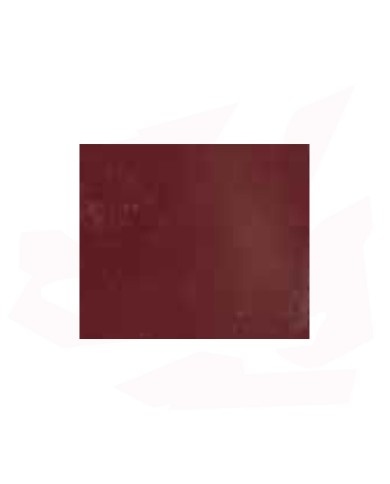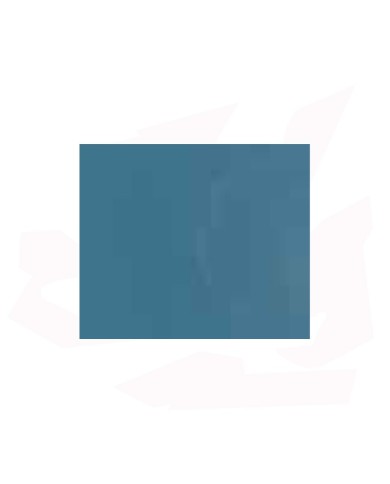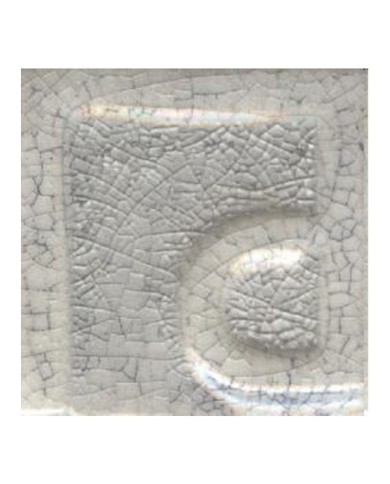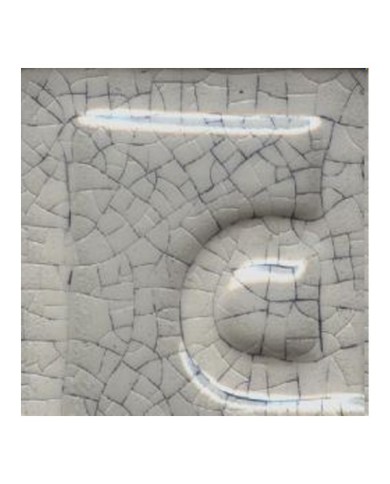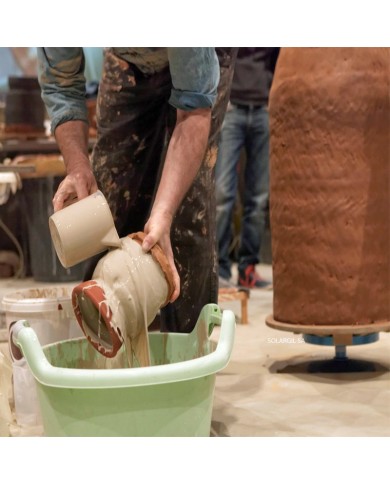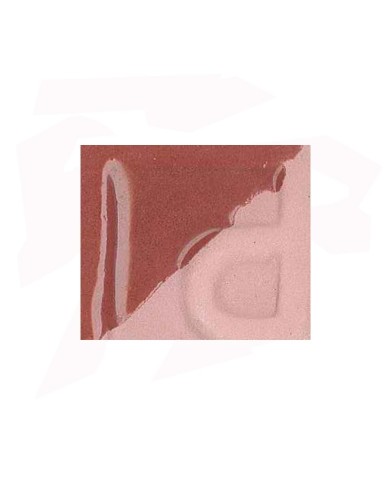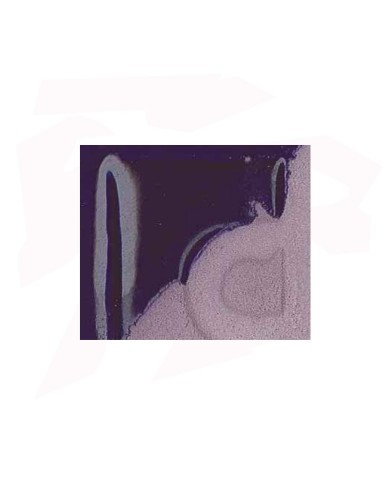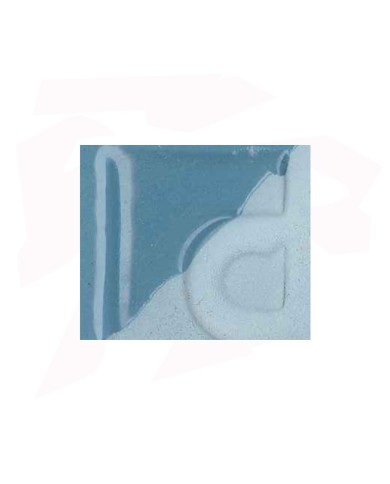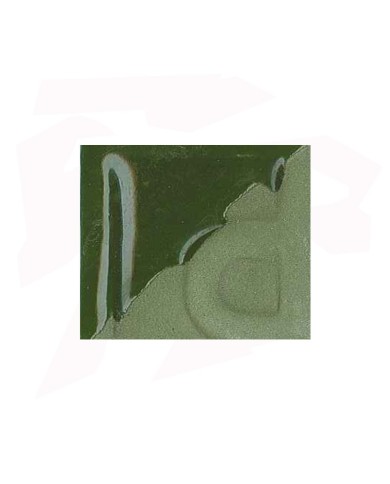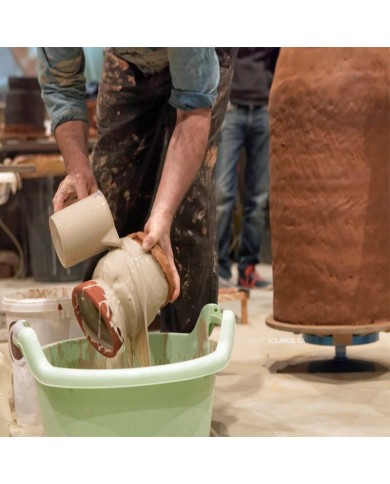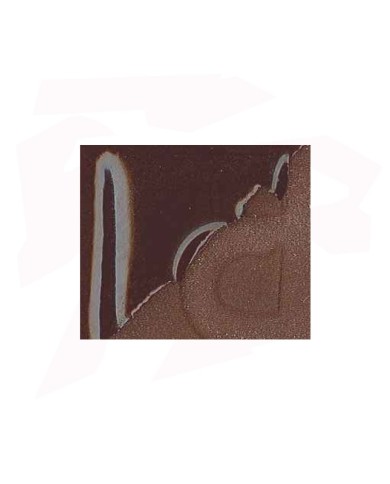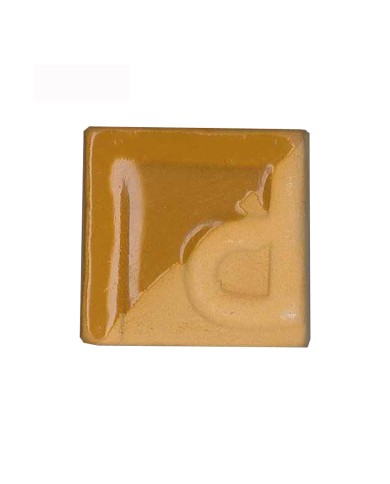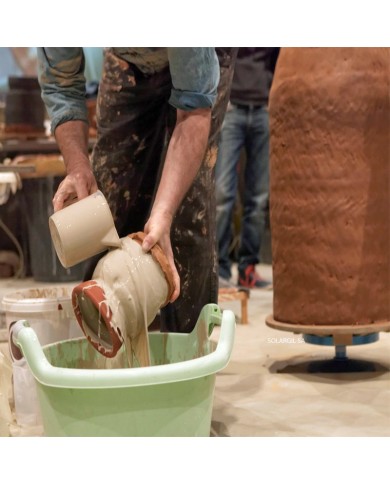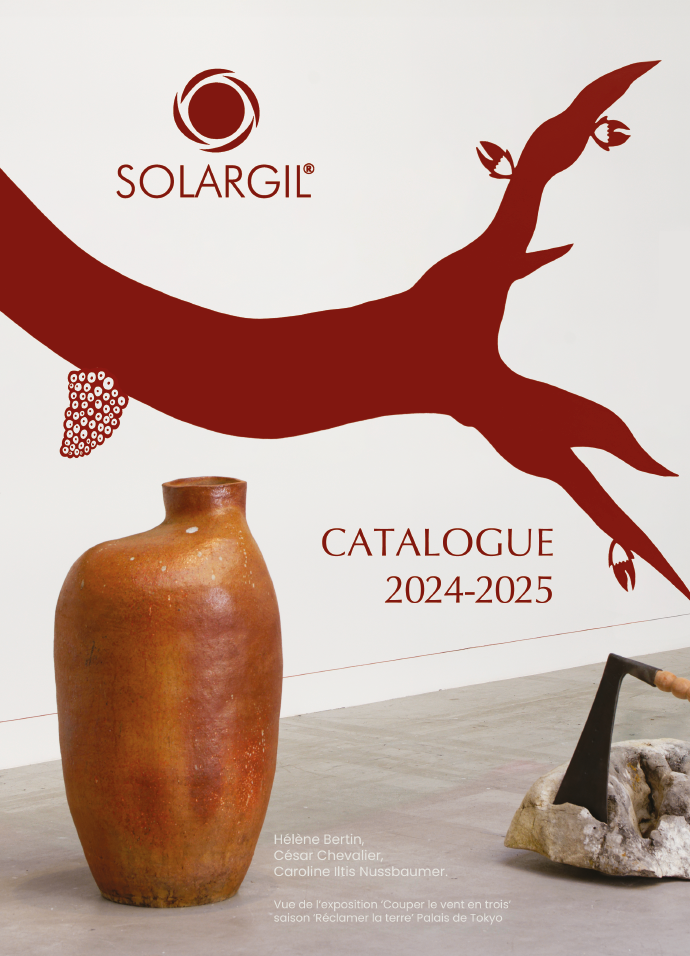Grey CS431
This is a set of specific glazes for the Cuerda Seca technic.
Black F4312 and White F4313 are powders to mix with Copaïva balm to draw partitions.
Inside these plans, you put glazes with brushes ou with syringe.
Colors are used deluted with water to obtain a thick mix.
CS200 is usable on red bisqueware : they are opaque.
CS set400 is usable on white or light medium : they are transparent.
All these colors can be mixed together except Red CS210 and Orange CS211.
Colors don't flow, even used in the vertical way.
Firing Temperature : 980C
GROUPE II
CUERDA SECA
Lilac CS423
This is a set of specific glazes for the Cuerda Seca technic.
Black F4312 and White F4313 are powders to mix with Copaïva balm to draw partitions.
Inside these plans, you put glazes with brushes ou with syringe.
Colors are used deluted with water to obtain a thick mix.
CS200 is usable on red bisqueware : they are opaque.
CS set400 is usable on white or light medium : they are transparent.
All these colors can be mixed together except Red CS210 and Orange CS211.
Colors don't flow, even used in the vertical way.
Firing temperature : 980°C
GROUPE II
Brown CS419
This is a set of specific glazes for the Cuerda Seca technic.
Black F4312 and White F4313 are powders to mix with Copaïva balm to draw partitions.
Inside these plans, you put glazes with brushes ou with syringe.
Colors are used deluted with water to obtain a thick mix.
CS200 is usable on red bisqueware : they are opaque.
CS set400 is usable on white or light medium : they are transparent.
All these colors can be mixed together except Red CS210 and Orange CS211.
Colors don't flow, even used in the vertical way.
Firing temperature : 980°C
GROUPE II
Cream CS417
This a set of specific glazes for the Cuerda Seca technic.
Black F4312 and White F4313 are powders to mix with Copaïva balm to draw partitions.
Inside these plans, you put glazes with brushes ou with syringe.
Colors are used deluted with water to obtain a thick mix.
CS200 is usable on red bisqueware : they are opaque.
CS set400 is usable on white or light medium : they are transparent.
All these colors can be mixed together excepted Red CS210 and Orange CS211.
Colors don't flow, even used in the vertical way.
Firing temperature : 980°C
GROUPE II
Pink CS404
This a set of specific glazes for the Cuerda Seca technic.
Black F4312 and White F4313 are powders to mix with Copaïva balm to draw partitions.
Inside these plans, you put glazes with brushes ou with syringe.
Colors are used deluted with water to obtain a thick mix.
CS200 is usable on red bisqueware : they are opaque.
CS set400 is usable on white or light medium : they are transparent.
All these colors can be mixed together excepted Red CS210 and Orange CS211.
Colors don't flow, even used in the vertical way.
Firing temperature : 980°C
GROUPE II
Yellow - CS 402
Series of special colors for the “Cuerda Seca” technique or cloisonné enamels.
All the colors are miscible with each other.
We also include the references F-4312 Black and F-4313, mixtures to trace the partition.
The CS-400 series is recommended for white paste.
The recommended firing temperature is 980°C.
Opaque orange cadmium enamel - CS 220
For the enameling of ceramic pieces on white and red clay.
Recommended firing temperature, between 960-980ºC.
Ochre - CS 218
This collection of colors necessary for the "Cuerda Seca" technique includes all the colors to develop a complete palette.
Colors can mix well, except Red CS-210 and Orange CS-211, which must be pure.
To obtain "Pastel" colors, it is necessary to add an opaque white enamel which decreases the intensity of the color and makes it softer.
Marble - CS 217
This collection of colors necessary for the "Cuerda Seca" technique includes all the colors to develop a complete palette.
Colors can mix well, except Red CS-210 and Orange CS-211, which must be pure.
To obtain "Pastel" colors, it is necessary to add an opaque white enamel which decreases the intensity of the color and makes it softer.
English green - CS 216
This collection of colors necessary for the "Cuerda Seca" technique includes all the colors to develop a complete palette.
Colors can mix well, except Red CS-210 and Orange CS-211, which must be pure.
To obtain "Pastel" colors, it is necessary to add an opaque white enamel which decreases the intensity of the color and makes it softer.
White - CS 215
This collection of colors necessary for the "Cuerda Seca" technique includes all the colors to develop a complete palette.
Colors can mix well, except Red CS-210 and Orange CS-211, which must be pure.
To obtain "Pastel" colors, it is necessary to add an opaque white enamel which decreases the intensity of the color and makes it softer.
Cobalt blue - CS 214
This collection of colors necessary for the "Cuerda Seca" technique includes all the colors to develop a complete palette.
Colors can mix well, except Red CS-210 and Orange CS-211, which must be pure.
To obtain "Pastel" colors, it is necessary to add an opaque white enamel which decreases the intensity of the color and makes it softer.
Dark brown - CS 213
This collection of colors necessary for the "Cuerda Seca" technique includes all the colors to develop a complete palette.
Colors can mix well, except Red CS-210 and Orange CS-211, which must be pure.
To obtain "Pastel" colors, it is necessary to add an opaque white enamel which decreases the intensity of the color and makes it softer.
Light brown - CS 212
This collection of colors necessary for the "Cuerda Seca" technique includes all the colors to develop a complete palette.
Colors can mix well, except Red CS-210 and Orange CS-211, which must be pure.
To obtain "Pastel" colors, it is necessary to add an opaque white enamel which decreases the intensity of the color and makes it softer.
Red - CS 210
This collection of colors necessary for the "Cuerda Seca" technique includes all the colors to develop a complete palette.
Colors can mix well, except Red CS-210 and Orange CS-211, which must be pure.
To obtain "Pastel" colors, it is necessary to add an opaque white enamel which decreases the intensity of the color and makes it softer.
Victoria green - CS 209
This collection of colors necessary for the "Cuerda Seca" technique includes all the colors to develop a complete palette.
Colors can mix well, except Red CS-210 and Orange CS-211, which must be pure.
To obtain "Pastel" colors, it is necessary to add an opaque white enamel which decreases the intensity of the color and makes it softer.
Green - CS 208
This collection of colors necessary for the "Cuerda Seca" technique includes all the colors to develop a complete palette.
Colors can mix well, except Red CS-210 and Orange CS-211, which must be pure.
To obtain "Pastel" colors, it is necessary to add an opaque white enamel which decreases the intensity of the color and makes it softer.
Yellow - CS 207
This collection of colors necessary for the "Cuerda Seca" technique includes all the colors to develop a complete palette.
Colors can mix well, except Red CS-210 and Orange CS-211, which must be pure.
To obtain "Pastel" colors, it is necessary to add an opaque white enamel which decreases the intensity of the color and makes it softer.
Blue - CS 206
This collection of colors necessary for the "Cuerda Seca" technique includes all the colors to develop a complete palette.
Colors can mix well, except Red CS-210 and Orange CS-211, which must be pure.
To obtain "Pastel" colors, it is necessary to add an opaque white enamel which decreases the intensity of the color and makes it softer.
Light brown - CS 205
This collection of colors necessary for the "Cuerda Seca" technique includes all the colors to develop a complete palette.
Colors can mix well, except Red CS-210 and Orange CS-211, which must be pure.
To obtain "Pastel" colors, it is necessary to add an opaque white enamel which decreases the intensity of the color and makes it softer.
Purple - CS 204
This collection of colors necessary for the "Cuerda Seca" technique includes all the colors to develop a complete palette.
Colors can mix well, except Red CS-210 and Orange CS-211, which must be pure.
To obtain "Pastel" colors, it is necessary to add an opaque white enamel which decreases the intensity of the color and makes it softer.
Yellow - CS 203
This collection of colors necessary for the "Cuerda Seca" technique includes all the colors to develop a complete palette.
Colors can mix well, except Red CS-210 and Orange CS-211, which must be pure.
To obtain "Pastel" colors, it is necessary to add an opaque white enamel which decreases the intensity of the color and makes it softer.
Black - CS 202
This collection of colors necessary for the "Cuerda Seca" technique includes all the colors to develop a complete palette.
Colors can mix well, except Red CS-210 and Orange CS-211, which must be pure.
To obtain "Pastel" colors, it is necessary to add an opaque white enamel which decreases the intensity of the color and makes it softer.
Eggplant - CS 201
This collection of colors necessary for the "Cuerda Seca" technique includes all the colors to develop a complete palette.
Colors can mix well, except Red CS-210 and Orange CS-211, which must be pure.
To obtain "Pastel" colors, it is necessary to add an opaque white enamel which decreases the intensity of the color and makes it softer.
Turquoise blue - CS 200
This collection of colors necessary for the "Cuerda Seca" technique includes all the colors to develop a complete palette.
Colors can mix well, except Red CS-210 and Orange CS-211, which must be pure.
To obtain "Pastel" colors, it is necessary to add an opaque white enamel which decreases the intensity of the color and makes it softer.
Transparent crackle enamel - CQ 03 (FR7)
Ceramic compound.
TRANSPARENT CRACKED
TRANSPARENT ENAMEL GLOSSY very alkaline and fondant, suitable for raku techniques or metallic reflections.
Specially recommended as ceramic covered.
With the addition of metallic oxides, characteristic colours of alkaline enamels are obtained, as in the case of the CuO for turquoise blue.
The recommended firing temperature ranges from 800-950°C.
Alkaline crackle transparent enamel - CQ 01 (FR6)
Composed of Fritte.
Cracked and shiny transparent email.
Its application is recommended on white or engobées pasta to appreciate the aged effect of cracking.
Allows decoration under enamel with burnt dye oxides.
Once the piece is cooked, it is recommended to use Judean Bitumen to bring out the cracked effect.
Other enamels can be used as aditives to increase the dilation coefficient.
The firing temperature varies between 940-980ºC.
Black CC11
Engobes range. Possibility to mix them together. Usable on raw pieces or bisquewares, for soaking or decoration.
Temperature of firing : 980-1000°C
Coefficient of expansion: 86
Free of lead
Crimson / CARMINE CC10
Engobes range. Possibility to mix them together. Usable on raw pieces or bisquewares, for soaking or decoration.
Temperature of firing : 940-1020°C
Free of lead
Sevres blue CC09
Engobes range. Possibility to mix them together. Usable on raw pieces or bisquewares, for soaking or decoration.
Temperature of firing : 940-1000°C
Free of lead
Sky blue CC08
Engobes range. Possibility to mix them together. Usable on raw pieces or bisquewares, for soaking or decoration.
Temperature of firing : 980-1000°C
Free of lead
Deep green CC07
Engobes range. Possibility to mix them together. Usable on raw pieces or bisquewares, for soaking or decoration.
Temperature of firing : 980-1000°C
Coefficient of expansion: 86
Free of lead
Light green CC06
Engobes range. Possibility to mix them together. Usable on raw pieces or bisquewares, for soaking or decoration.
Temperature of firing : 980-1000°C
Free of lead
Brown CC05
Engobes range. Possibility to mix them together. Usable on raw pieces or bisquewares, for soaking or decoration.
Temperature of firing : 940-1000°C
Free of lead
Orange CC04
Engobes range. Possibility to mix them together. Usable on raw pieces or bisquewares, for soaking or decoration.
Temperature of firing : 980-1000°C
Free of lead
Toffee CC03
Engobes range. Possibility to mix them together. Usable on raw pieces or bisquewares, for soaking or decoration.

